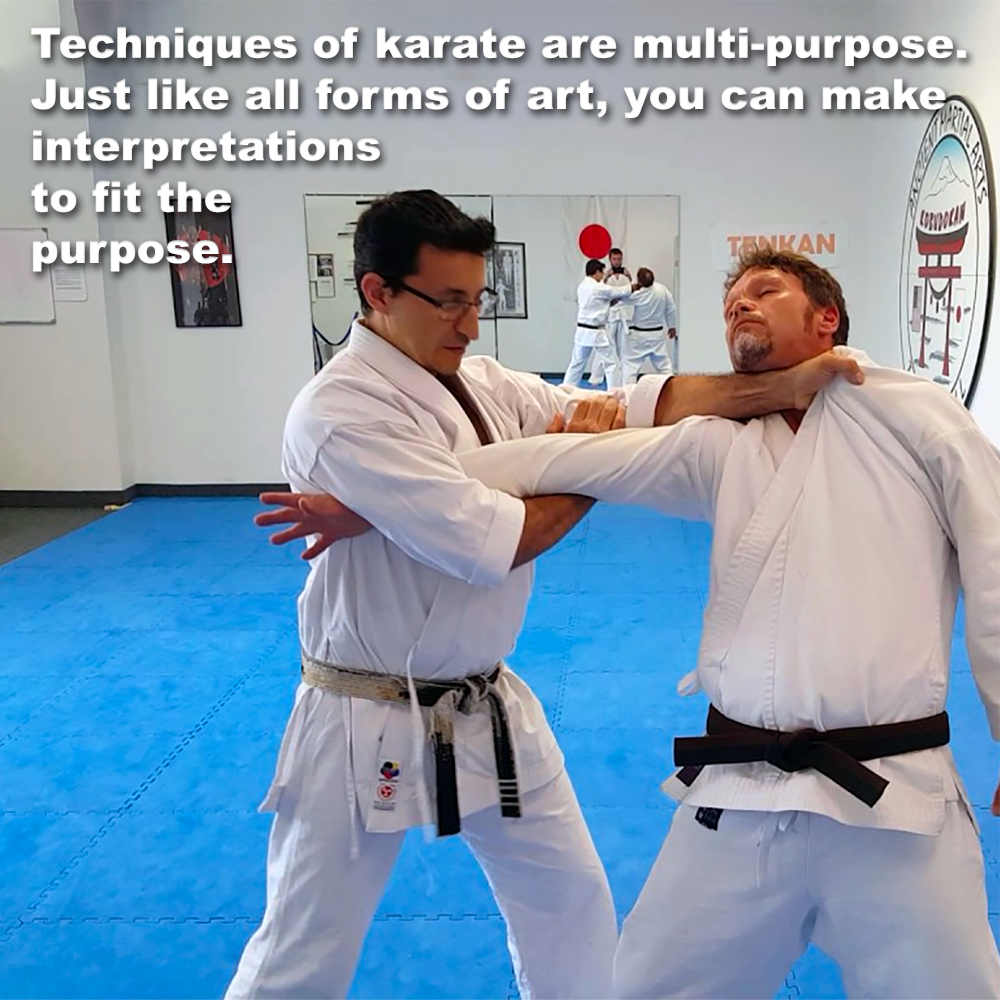
The techniques of karate are multi-purpose, born of principles. Just like all forms of art, you can make interpretations to fit the purpose.
Posted by ADAM CARTER on JAN 27, 2024

The techniques of karate are multi-purpose, born of principles. Just like all forms of art, you can make interpretations to fit the purpose.
(2 minute and 7 second read)
Everyone aspires for advancement, everyone wants to wrap themselves in another black belt, while others just want to learn more.
Yet, few dare to confront their current limitations, reflected in the mirror of self-evaluation. This is where many karate practitioners and commentators stumble.
In the realm of karate, what most witness and engage in today is often referred to as “Omote” by the Japanese, translating to “surface” in English.
Essentially, it embodies the notion of “What you see is what you get!”
As an example. If a technique appears to be a ‘spear-hand’ (nukite 貫手), or as per my recent article, a ‘mountain punch’ (yama zuki 山突き), it is precisely that, and nothing more.
Many enthusiasts read the Japanese name of a technique, like ‘nukite’ from above, and erroneously assume that its application is confined to a singular purpose (a topic worthy of its own discussion).
However, the truth is that there exist multiple layers and dimensions to these techniques.
Karate offers far more than just punches, kicks, and ‘blocks’. Sadly, many remain content with this superficial understanding, chasing belts and making uninformed comments without delving deeper.
A crucial indicator of true progress is asking questions, but the answers you seek shouldn’t merely validate your existing beliefs. This is Ego and confirmation bias.
A pivotal indicator of trying to genuinely understand something lies in the inclination to pose questions, not make comments which are profoundly inaccurate.
Yet, in the pursuit of answers, it necessitates keeping an open mind and actively seeking evidence that challenges initial perspectives.
Don’t cling to familiar sources; instead, embrace open-mindedness. Seek out evidence that challenges your understanding, for that’s where true growth lies.
It’s good to challenge existing beliefs, even if it proves you may have been wrong. After all, it’s how we learn.
In our fast-paced world, instant results and quick fixes often hold more appeal than long-term, dedicated study. And many individuals feel comfortable with their current understanding and resist challenging their existing beliefs.
But even for those aware that there maybe more, commitment can be a formidable obstacle. The sheer physical and mental demands of training can discourage many people from sustained exploration, with commitment being short lived and halfhearted.
Fear of failure or a fragile ego can further hinder progress, as individuals become resistant to challenging their existing understanding.
The art of asking the right questions becomes paramount. Without this skill, true discovery remains elusive, without the ability to pose meaningful queries, you maybe destined to remain in the realm of ignorance.
Why? Because the techniques of karate are multi-purpose, born of principles. Just like all forms of art, you can make interpretations to fit the purpose.
“The greatest obstacle to discovery is not ignorance – it is the illusion of knowledge”. – Daniel J. Boorstin (1914-2004)
![]() Photo Credit: With thanks to Sal Belahi
Photo Credit: With thanks to Sal Belahi
